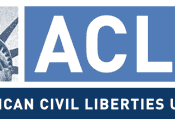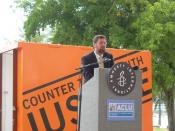For the purpose of exploring Constitutional rights and their impact on the employees of an organization, this paper will discuss the Patton-Fuller Community Hospital (henceforth "Patton-Fuller"). While in many respects, the rights of Patton-Fuller's employees are similar to those of any other company; a hospital was chosen because the duty of care owed to its patients added another level of complexity in determining whose rights take precedent. Constitutional rights will be explored as they are involved in drug testing (particularly as it pertains to unreasonable search and seizure) and employee monitoring via email/telephone use/video surveillance (and the implications thereof to one's right to privacy).
Drug testing in the Workplace
Many workplaces require drug testing in order to start a new position or to continue employment. Whether or not one is a habitual or an occasional drug user, a positive drug test can put one out of a job or in a rehabilitation facility.
Why is workplace drug testing legal? On September 15, 1986, President Ronald Reagan signed Executive Order 12564. The intent of this order was to create a drug-free Federal workplace. The order forced all Federal employees to stop using drugs while on or off duty. The Executive Order 12564 eventually helped create the Drug-Free Workplace Act of 1988. "The Drug-Free Workplace Act of 1988 requires some Federal contractors and all Federal grantees to agree that they will provide drug-free workplaces as a condition of receiving a contract or grant from a Federal agency" (United States Department of Health and Human Services, 1988). The order from the Drug-Free Workplace Act of 1988 initially applied only to Federal employees and contracts; nevertheless, private employers, states and other agencies followed the footsteps of the Federal government.
Few will argue that most drugs are not harmful to today's workforce; however, some...


